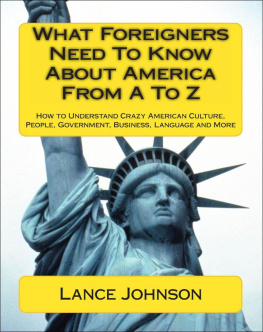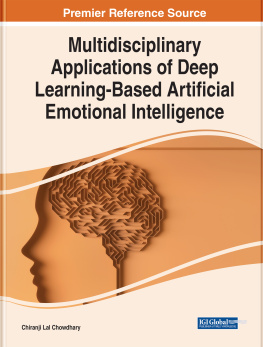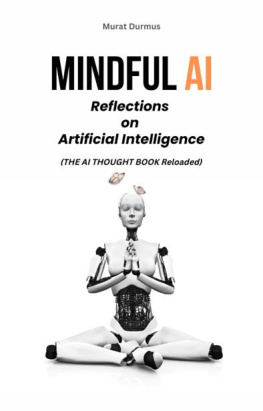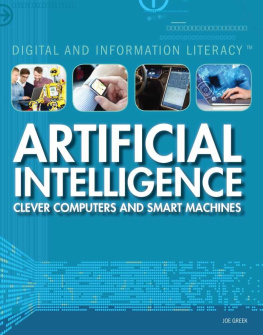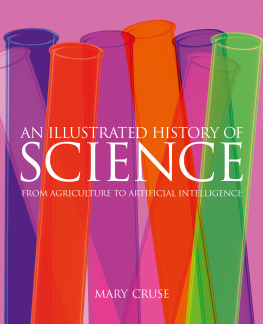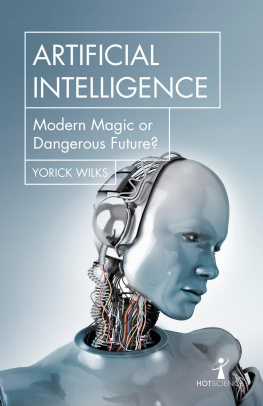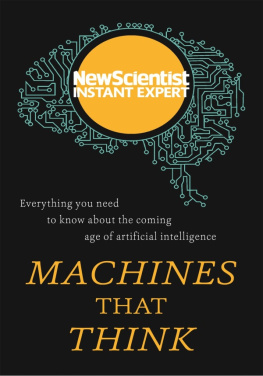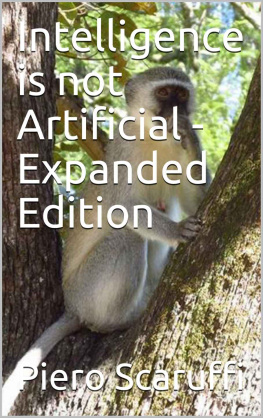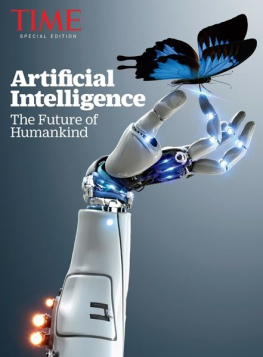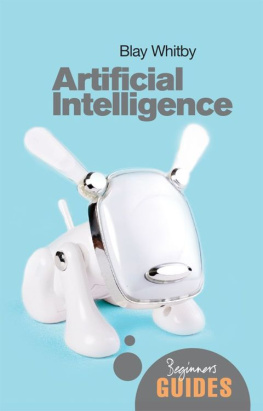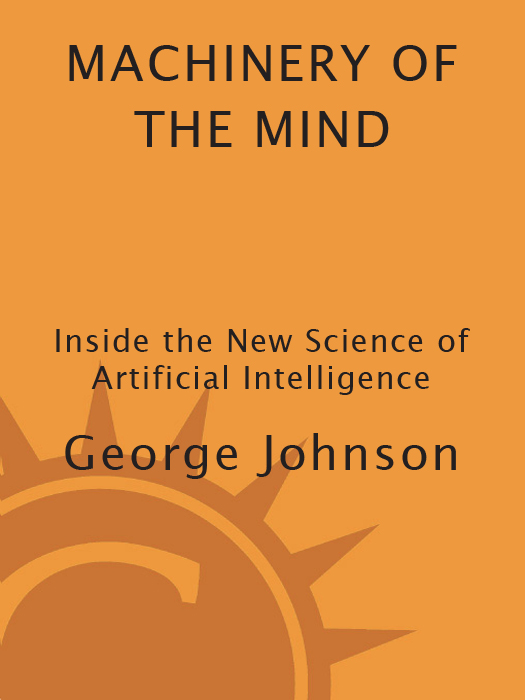Also by G EORGE J OHNSON
Architects of Fear: Conspiracy Theories and Paranoia in American Politics
Copyright 1986 by George Johnson
All rights reserved under International and Pan-American Copyright Conventions. Published in the United States by Times Books, a division of Random House, Inc., New York, and simultaneously in Canada
by Random House of Canada Limited, Toronto.
Grateful acknowledgment is made to the following for permission to reprint previously published material:
Basic Books, Inc.: excerpts from Gdel, Escher, Bach: An Eternal Golden Braid by Douglas R. Hofstadter. Copyright 1979 by Basic Books, Inc., Publishers. Rights in the United Kingdom, excluding Canada, administered by Harvester Press, Ltd. Reprinted by permission of the publishers.
Morgan Kaufmann: Excerpts from Machine Learning: An Artificial Intelligence Approach, edited by Ryszard S. Michalski, J. G. Carbonell, and T. M. Mitchell, .
Reprinted by permission
Scientific American, Inc.: excerpt from Computer Recreations: Artificial Insanity: When a Schizophrenic Program Meets a Computerized Analyst, by A. K. Dewdney. Copyright 1984 by Scientific American, Inc. All rights reserved.
Tate Gallery Publications: excerpt from Harold Cohen by M. G. Compton from a booklet for Cohens show at the Tate Gallery, June 8July 24, 1982. Used by permission.
Library of Congress Cataloging-in-Publication Data
Johnson, George, 1952 Jan. 20
Machinery of the mind.
1. Artificial intelligence. I. Title.
Q335.J64 1986 006.3 86-1313
eISBN: 978-0-307-79939-5
v3.1
For Katie Rosenthal
ACKNOWLEDGMENTS
Most of the research for this book was done during 1984 when I was an Alicia Patterson Foundation journalism fellow. I would like to thank the members and staff of the organization, especially Joseph Albright, Helen McMaster Coulson, and Cathy Trost, for a most rewarding year.
As a fellow of the foundation, I was able to travel around the country interviewing a number of scientists: Hans Berliner, Robert Berwick, Daniel Bobrow, Michael Brady, Rodney Brooks, John Seely Brown, Harold Cohen, Randall Davis, Edward Feigenbaum, Martin Fischler, Edward Fredkin, Michael Genesereth, Richard Granger, Cordell Green, Barbara Grosz, Frederick Hayes-Roth, Douglas Hofstadter, Jerrold Kaplan, Martin Kay, Douglas Lenat, David Levitt, John McCarthy, John McDermott, Jim Meehan, Marvin Minsky, Penny Nii, Nils Nilsson, Judea Pearl, Keith Price, Earl Sacerdoti, Roger Schank, Herbert Simon, Brian Smith, Joseph Weizenbaum, Patrick Winston, and William Woods. I would like to thank them all for their time and hospitality. Id also like to thank Claudia Mazzetti and Louis Robinson for helping me find my way around the field.
Many thanks are due to William Bain, Robert Berwick, John Seely Brown, Harold Cohen, Scott Fahlman, Cordell Green, Frederick Hayes-Roth, Alan Lappin, David Levitt, Amnon Meyers, Melanie Mitchell, David Rogers, Katie Rosenthal, Herbert Simon, Patrick Winston, and William Woods, who each read sections of the manuscript ranging in length from several pages to several chapters. I would especially like to thank David Anderson and Thomas Goodman, who read most of the final draft, and Tom Gruber, Douglas Hofstadter, Larry Hunter, Cheryl Katz, and Nancy Wogrin, who each read the whole thing. The insightful comments of all these people improved the book immensely.
At Times Books, I would like to thank my excellent editor, Jonathan Segal, and his staff, especially Ruth Fecych and Sarah Trotta. From the beginning, my agent, Esther Newberg, and her assistant, Kathy Pohl, have provided the kind of support and encouragement that help make writing a less lonely process than it might otherwise be.
CONTENTS
PROLOGUE :
Breaking a Thought into Pieces
CHAPTER 1
The State of the Art
CHAPTER 2
Thinking Without a Brain
CHAPTER 3
A Symphony in 1s and 0s
CHAPTER 4
The Art of Programming
CHAPTER 5
The Meaning of Meaning
CHAPTER 6
Listening Intelligently
CHAPTER 7
Planning and Seeing
CHAPTER 8
Learning About the World
CHAPTER 9
Labyrinths of Memory
CHAPTER 10
The Light of Discovery
CHAPTER 11
The Finer Arts
CHAPTER 12
The Scientists and the Engineers
CHAPTER 13
In the Chinese Room
CHAPTER 14
Calculating Minds
CHAPTER 15
The Copycat Project
PREFACE
About a year and a half ago, while I was visiting Stanford University, Penny Nii suggested to me the similarities between journalism and a curious new field called knowledge engineering. Nii is a computer scientist whose specialty is artificial intelligence, the effort to make machines that think. Knowledge engineers interview expertsin medicine, for exampleand translate some of what they know into a form that can be fed into a computer. Then, if all goes well, the computer will be able to make decisions as good as or better than those of its human counterparts.
Thats the theory, anyway. Knowledge engineering is still in its infancy; it remains more a craft than a science. As I explored various artificial-intelligence laboratories around the country, I found that the design of so-called expert systems is only a tiny corner of a sprawling, wonderfully diverse attempt to use computers and programs to lay bare the mysteries of thought and create intelligence outside of the human body. Though my research took me further and further from the more mundane realm of knowledge engineering, I found that my thoughts kept returning to that conversation with Nii.
Knowledge engineers, she had explained, must absorb themselves in a field they dont belong to and emerge with enough understanding to write a proper program. They must be able to describe a subject without learning every detail, to capture expertise without devoting the years it takes to become an expert.
Journalists find themselves in much the same situation, though their aim is to communicate not with a computer but with an audience of curious nonspecialists who hope to get a feel for what scientists do without becoming scientists themselves. The knowledge engineers do their work using tools such as data structures, algorithms, programming languagesthe greater and lesser arcana of the field of computer science. In the case of the journalist, the tools are metaphor, description, example, narrative techniquein short, the English language. Using these devices, one must try to take the strange and relate it to the familiar, communicate an unknown subject by building on what people already know. A journalist who is writing a book about artificial intelligence cannot become a computer scientist. No matter how much you read or how many people you interview, you are always in the frustrating position of knowing less than the people you are writing aboutexperts with Ph.D.s and years or decades of experience.
How then is science writing possible? The answer, I believe, is that the journalist has another kind of expertise, the ability to cut through the details of a subject and see its essence, to identify the important themes and personalities of a field and synthesize them into a story that a general reader will find enticing and clear.



